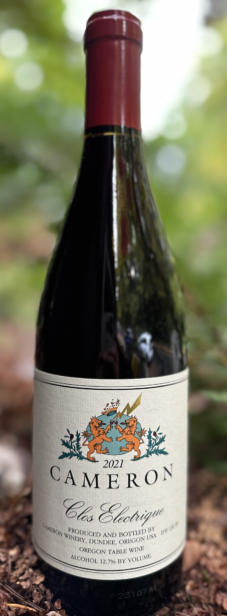Send in the Clones!
From John, March 31st, 2015First, let’s define cloned vines: it is a group of plants derived from a single ancestor such that all of the vines propagated from that mother plant are genetically identical.

A vineyard in Burgundy, France, where different clones express color variation in the Fall
Within any grape varietal are a number of clonal variants which, though they are genetically distinct individuals, are still grouped under a common heading. For example Pinot noir is famous for having an unstable genome and therefore is characterized by 100’s if not thousands of different clones but they are all called “Pinot noir.” And the same thing is true of Chardonnay.
In both cases, if you take a trip to Burgundy, you will find that the most notable vineyards (and therefore the most famous) are composed of an enorm
ous number of different clones within the same small plot of land. The idea, worked out literally over centuries, is that a vineyard which possesses all of this genetic variation will produce wines of the greatest complexity.
Here in the United States (and in the New World in general) we have committed our agriculture to clonal redundancy, planting our fields and vineyards often with single clones. This of course sets us up for problems with respect to poor disease resistance and, certainly in the case of grapes, to lack of complexity in the finished wines.
The irony of all of this is that over 100 years ago, pioneer grape growers came to this country carrying with them multitudes of amazing clones from Europe. Paul Masson in particular brought legendary genetic material, both Pinot noir and Chardonnay, from Burgundy. And other people added to it over the years.
However, in the 1950’s and 60’s agricultural scientists decided that production, and as much of it as possible, was the model that they would convey to the wine world here in the US. So they undertook the task of “cleaning up” the aforementioned clones and getting rid of even more of them until our inventory was reduced at least officially to a relatively few high production, early ripening, frankly for the most part boring examples of Pinot noir and Chardonnay. In the 1980’s agricultural scientists in Dijon accomplished a comparative program bestowing upon us clones of Chardonnay and Pinot noir that would “ripen earlier” (if one uses only Brix and pH as the ripening criteria). Much of the Oregon and California wine industry is now planted to these clones.
Fortunately many of the old Paul Masson and Carl Wente clones still persist in vineyards across California and Oregon. For those whose intent is to make kickass wines, these vines are still sought out for the amazing budwood that they can convey. So the next time that you are wondering why one vineyard produces lofty mind boggling wines and another right near it does not, consider the clones!
Share ThisRecent News & Rants
old vines, old wines & an old winemaker
One of the advantages of being an “old-timer” in the world of enology and viticulture is that our vines have aged along with me. It is a well known phenomenon in the world of wine that old vines tend to produce superior wine. A recent tasting of 18 vintages of Clos Electrique Blanc magnums proved that adage to be true! Overall, the consensus was that 8-14 years of aging seems to be the absolute “sweet spot” for this magnificent vineyard.
There’s More... >What do winter cold snaps do to the vineyard?
With climate progressively changing, one phenomena that is starting to occur fairly regularly is an occasional bout of intense winter cold weather. In January 2024, temperatures descended to as low as 4F in high altitude vineyards. Read on to learn how grapevines respond to this stress.
There’s More... >Cheers to a fantastic year ahead!
Bottles of Cameron Winery wine that are currently for sale.
2022 Dundee Hills Chardonnay, 2021 White Oak Pinot noir, 2021 Abbey Ridge Pinot noir, 2021 Clos Electrique Rouge, 2021 Clos Electrique Blanc, 2022 White […]
There’s More... >

